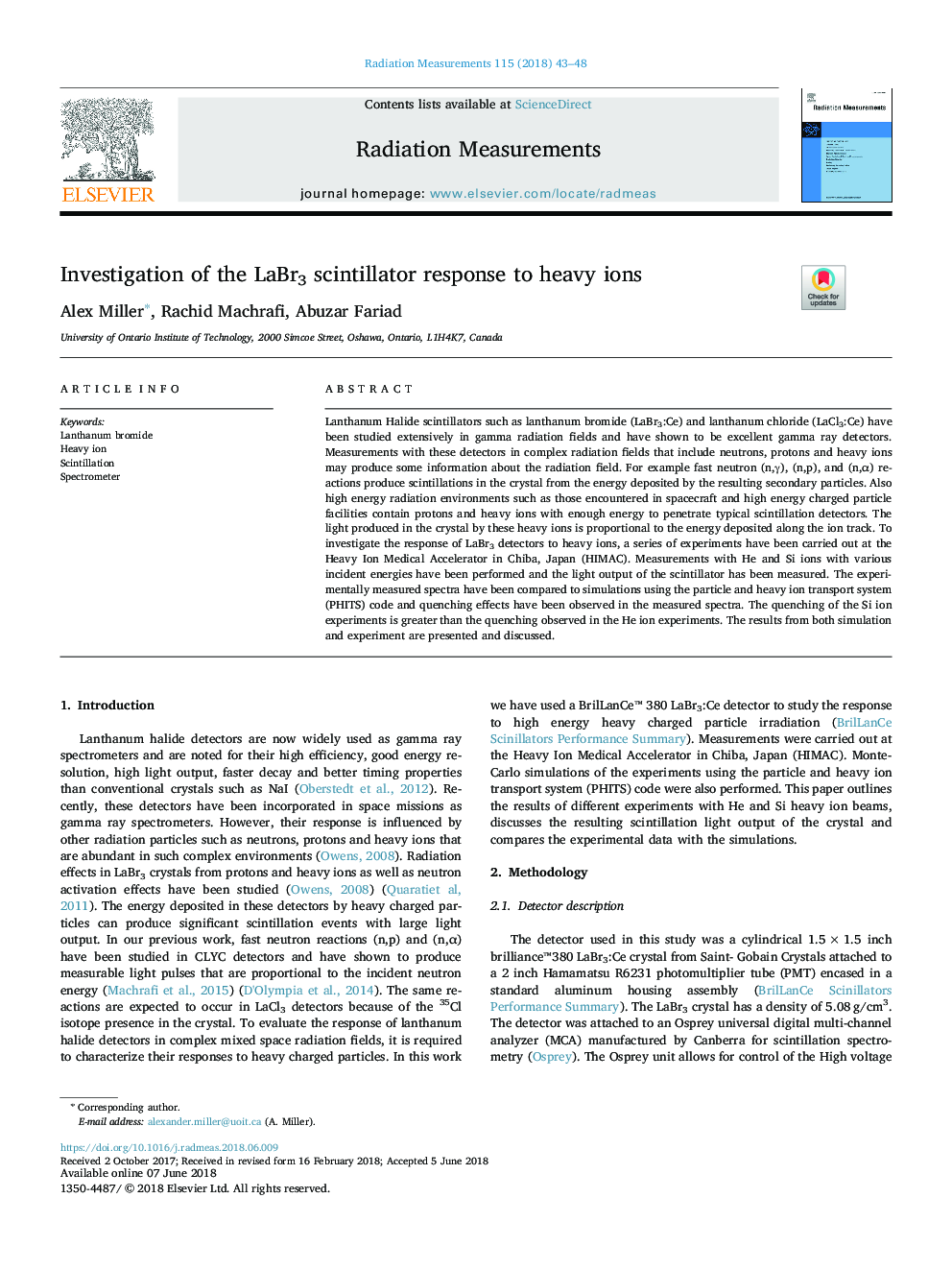| Article ID | Journal | Published Year | Pages | File Type |
|---|---|---|---|---|
| 8249781 | Radiation Measurements | 2018 | 6 Pages |
Abstract
Lanthanum Halide scintillators such as lanthanum bromide (LaBr3:Ce) and lanthanum chloride (LaCl3:Ce) have been studied extensively in gamma radiation fields and have shown to be excellent gamma ray detectors. Measurements with these detectors in complex radiation fields that include neutrons, protons and heavy ions may produce some information about the radiation field. For example fast neutron (n,γ), (n,p), and (n,α) reactions produce scintillations in the crystal from the energy deposited by the resulting secondary particles. Also high energy radiation environments such as those encountered in spacecraft and high energy charged particle facilities contain protons and heavy ions with enough energy to penetrate typical scintillation detectors. The light produced in the crystal by these heavy ions is proportional to the energy deposited along the ion track. To investigate the response of LaBr3 detectors to heavy ions, a series of experiments have been carried out at the Heavy Ion Medical Accelerator in Chiba, Japan (HIMAC). Measurements with He and Si ions with various incident energies have been performed and the light output of the scintillator has been measured. The experimentally measured spectra have been compared to simulations using the particle and heavy ion transport system (PHITS) code and quenching effects have been observed in the measured spectra. The quenching of the Si ion experiments is greater than the quenching observed in the He ion experiments. The results from both simulation and experiment are presented and discussed.
Related Topics
Physical Sciences and Engineering
Physics and Astronomy
Radiation
Authors
Alex Miller, Rachid Machrafi, Abuzar Fariad,
